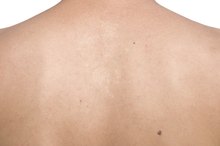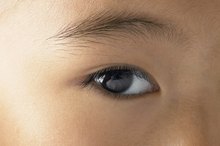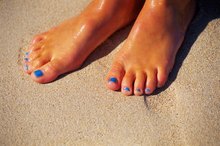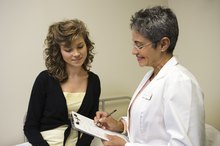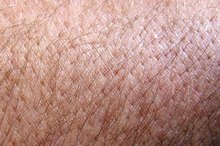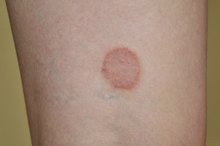What does fact checked mean?
At Healthfully, we strive to deliver objective content that is accurate and up-to-date. Our team periodically reviews articles in order to ensure content quality. The sources cited below consist of evidence from peer-reviewed journals, prominent medical organizations, academic associations, and government data.
The information contained on this site is for informational purposes only, and should not be used as a substitute for the advice of a professional health care provider. Please check with the appropriate physician regarding health questions and concerns. Although we strive to deliver accurate and up-to-date information, no guarantee to that effect is made.
Ringworm Life Cycle
Many people do not realize that the ringworm, or dermatophytosis, is actually a fungal infection that is found anywhere on the body of animals and humans. According to Mayo Clinic, ringworm is one of many causes of hair loss on the scalp of humans 2.
If you are experiencing serious medical symptoms, seek emergency treatment immediately.
Life Cycle
An infected animal sheds ringworm spores 1. These spores can exist in the environment, such as in mud, bedding and food, for more than 18 months. Ringworm symptoms appear within 10 to 20 days after initial contact with the fungal spores.
Symptoms
Bumps in a Circle on the Skin
Learn More
The fungal infection can develop on the body, but especially under fingernails and on feet. Ringworm skin lesions normally begin as distinctive, reddish round areas of hair loss, which may progress to reddening, thickening and loss of pigmentation to other skin areas. The Centers for Disease Control and Prevention notes that rash can be dry and scaly or wet and crusty 1.
Treatment
Infected areas must be kept clean. Treat with an over-the-counter fungal product, such as Lamasil. Prescription topical products or pills can be used to treat ringworm in severe cases.
Prevention
Skin Problems That Cause Eyebrow Loss
Learn More
The best prevention is to avoid animals that have or are being treated for the fungal infection. Also, keep skin and feet clean and dry, shampoo regularly, wear sandals or shoes at gyms, lockers and pools, and do not share clothing, towels and personal-care items with other people.
Health Risk
Ringworms can be transmitted to humans from pets, from one person to another by direct contact or by contaminated combs, unwashed clothing and shower or pool surfaces.
Related Articles
References
- Centers for Disease Control and Prevention: Ringworm and Animals
- Mayo Clinic: Hair Loss
- Centers for Disease Control and Prevention. Fungal Diseases: Ringworm. Updated August 6, 2018.
- Havlickova B, Czaika VA, Friedrich M. Epidemiological trends in skin mycoses worldwide. Mycoses. 2008;51 Suppl 4:2-15. doi:10.1111/j.1439-0507.2008.01606.x
- InformedHealth. Athlete's foot: Overview. Updated June 14, 2018.
- Sentamilselvi G, Janaki C, Murugusundram S. Trichomycoses. Int J Trichology. 2009;1(2):100–107. doi:10.4103/0974-7753.58552
- Raugi G & Nguyen TU. Chapter 22: Superficial Dermatophyte Infections of the Skin. In: Netter's Infectious Diseases. Ed., Jong EC & Stevens DL. 2012:102-109. doi:10.1016/B978-1-4377-0126-5.00022-7
- Gupta AK, Macleod MA, Foley KA, Gupta G, Friedlander SF. Fungal Skin Infections. Pediatr Rev. 2017;38(1):8-22. doi:10.1542/pir.2015-0140
- Tabassum N, Hamdani M. Plants used to treat skin diseases. Pharmacogn Rev. 2014;8(15):52–60. doi:10.4103/0973-7847.125531
- Phillips TG, Slomiany WP, Allison R. Hair Loss: Common Causes and Treatment. Am Fam Physician. 2017;96(6):371-378.
- Andrews, MD, Burns, M. "Common Tinea Infections in Children." Am Fam Physician. 2008 May 15;77(10):1415-20.
- Centers for Disease Control and Prevention. "Definition of Ringworm." Dec 6, 2015.
- Havlickova B, Czaika, VA, Friedrich, M. "Epidemiological Trends in Skin Mycoses Worldwide." Mycoses. 2008 Sep;51 Suppl 4:2-15. DOI: 10.1111/j.1439-0507.2008.01606.x.
- Mounsey, AL and Reed, SW. "Diagnosing and Treating Hair Loss." American Family Physician. Aug 15, 2009. 80.4(2009), 356-362.
